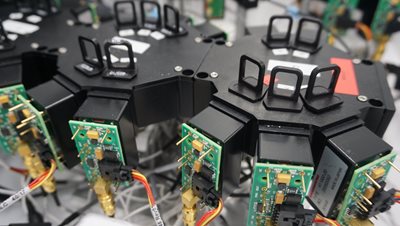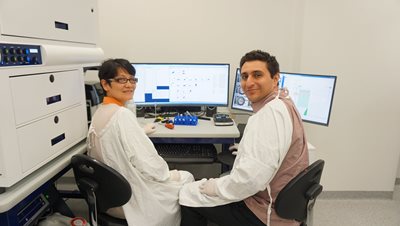September 17, 2018 Print
A world first technology at the Westmead Institute will advance life-changing medical research and cement WIMR at the forefront of medical research in Australia.
A world first technology at the Westmead Institute for Medical Research (WIMR) will advance life-changing medical research and cement WIMR at the forefront of medical research in Australia.
 The Symphony A5.2 flow cytometry machine can count tens of thousands of cells per second and measure up to 50 different characteristics of a single cell.
The Symphony A5.2 flow cytometry machine can count tens of thousands of cells per second and measure up to 50 different characteristics of a single cell.
The million-dollar technology will usher in an advanced generation of a research technique known as flow cytometry, which uses lasers to count and analyse specific properties of individual cells.
The Symphony A5.2 flow cytometry machine is more powerful than previous models. It can count tens of thousands of cells per second and measure up to 50 different characteristics of a single cell.
Flow cytometry is widely used to diagnose health conditions, particularly diseases of the blood like leukaemia, and will benefit researchers in areas such as kidney and liver disease, autoimmune disorders and cancer research.
WIMR’s flow cytometry advanced specialist, Suat Dervish, said that some of the best medical research minds would benefit from this new technology.
“It’s exciting that the Westmead Institute is the first place in the world to be working with this state-of-the art technology,” Mr Dervish said.
It’s exciting that the Westmead Institute is the first place in the world to be working with this state-of-the art technology.
“It is an important addition to our suite of world class scientific research platforms here at the Institute.
“The Symphony A5.2 is more sensitive and more powerful than our previous flow cytometry equipment, and will allow researchers from a broad range of research disciplines to get highly specific information about individual cells.
“This new technology will allow high resolution data to be collected about individual cells, and it will ultimately lead to better clinical diagnostics and therapeutic outcomes.
“This new machine will benefit researchers across the entire Westmead precinct, including the Children’s Medical Research Institute and the Kid’s Research Institute,” he said.
The process of flow cytometry works by having cells from tissues or blood suspended in a liquid, and then passing the suspended cells through a high-powered laser beam that detects the specific property of each cell.
 Dr Min Hu and WIMR’s flow cytometry advanced specialist Suat Dervish running samples on the new machine.
Dr Min Hu and WIMR’s flow cytometry advanced specialist Suat Dervish running samples on the new machine.
The equipment was installed in August, and the first researchers commenced using the machine this month.
Dr Min Hu from WIMR’s islet transplantation team was the first researcher to use this new technology.
She uses the equipment to measure cells in the immune system following pancreatic islet transplants to treat type 1 diabetes.
“We’ll use this latest technology to help see changes in cell populations in a patient’s immune system to assess whether they’re at risk of transplant rejection,” she said.
This new flow cytometry equipment was made possible thanks to grants from the Cancer Institute NSW, University of Sydney, and the National Health and Medical Research Council.